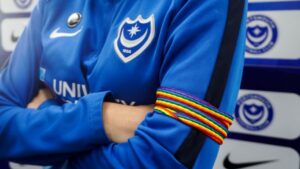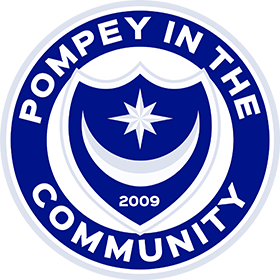7 in 10 football fans who’ve attended a match have heard or witnessed homophobia on the terraces
3 in 5 fans believe anti-gay abuse from fans dissuades gay professional players from coming out
66% of lesbian, gay, bi and trans people felt that there were problems with homophobia and transphobia in sport and that this acted as a barrier to LGBT people taking part.
(Facts taken from www.stonewall.org.uk)
What is Pride?
Pride Month is a celebration of LGBTQ+ history. It praises the continued work of queer people, and raises awareness of the ongoing issues that affect the LGBTQ+ community. It is about acceptance and equal opportunity; a celebration of the important and ground-breaking steps we have already made, but also the future path ahead for acceptance within the wider community.
Pride is celebrated in June, historically significant as the month the Stonewall riots took place. Riots which are remembered as a turning point moment in the treatment of LGBTQ+ people around the world. This is celebrated through live events such as parties, parades, talk, and online safe spaces.
This year Pompey in the Community attended a pride event in Portsmouth where the whole community came together to celebrate diversity and inclusivity amongst Pompey locals. There was a brilliant atmospheric buzz, and we had a fantastic time talking to all sorts of people across our community.

For Pompey in the Community, this Pride Month is also a time for us to reflect on how we can reinforce our message; the commitment to LGBTQ+ inclusion that is imbedded within our staff, our culture, and our club.
Pride in Sport
This year is an important year for LGBTQ+ identification within football, with the 17-year-old Blackpool player, Jake Daniels, becoming the first professional male player in the UK to publicly ‘come out’ for decades. The bravery in this decision to publicly live life as a gay footballer is unprecedented, and his courage has the potential to lead the way for further inclusivity within the male game. A chance for others to feel they can be more open about their identity and sexuality.
However, the significant absence of openly gay players before now problematically points towards an environment for men that is, for many, hostile and unwelcoming. Troublingly, male football is notably behind the diversity already imbedded within many other sporting worlds. Comparing male professional football to the women’s game alone shows a massive disparity (there were 40 openly LGBTQ+ players at the 2019 World Cup). Moreover, the treatment and eventual suicide of Justin Fashanu in 1990 is still a shadow that looms large in male professional football, making players think twice about the potential ramifications before coming out.
It is precisely because of these obstacles that football clubs must prioritise safe spaces for their players to feel comfortable enough to be open with their peers and fans. Institutionally, we need to set the example and be the catalyst for change—to get the ball rolling to facilitate further progress in an area that is, particularly historically, an unwelcoming environment.
Looking to the Future: Breaking Barriers
A young player making this announcement, at the very start of his career, marks the start of a new era in football; a new fearless generation where a gay man can tune into a match and see representation on the pitch. The more players that feel comfortable to come out and share their stories enriches the diversity of the game for more inclusive and diverse squads.
Role models in football help break down the stigma, and support from his cub, teammates, and fans alike help to help amplify the process.
We need to set the standard and be the change we want to see in our community and club. That is why we support Pride Month and support the Rainbow Laces campaign: a symbol of inclusion across sport and fitness.


Rainbow Laces may seem to some as something with little quantifiable or physical impact to address the many structural and institutional issues that can make gay people feel isolated from the game. However, rainbow iconography on the football field makes a difference to a culture that has previously overlooked its failings. Oppressive rhetoric and anti-LGBTQ sentiment previously brushed off as banter is now held accountable for the damaging culture it perpetuates. Rainbow Laces’ prominence and visibility in football signals an increasing attitude and move towards acceptance and celebration of LGBTQ+ experiences.
The solution is to start small. To allow small marginal steps to slowly shape and remould football culture into an institution where LGBTQ+ visibility is seen as something so embedded within the sport that it becomes everyday.
For fans and players alike, it is pride; in its representations and visibility that helps facilitates a step towards inclusivity, acceptance and a better future for football and the wider world of sport.





